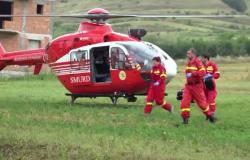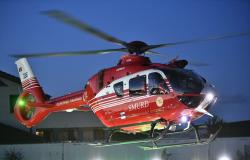by Brian Hioe
Language:
English
photo Credit: 湯小河/WikiCommons/CC0
THE TAIWANESE GOVERNMENT is expected to continue normal operations in terms of air traffic, after the Chinese government announced unilaterally in February that it would be shifting flight route M503 to pass close to the median line of the Taiwan Strait. This would occur more frequently in the event of inclement weather.
The Chinese government followed up with subsequent moves in April, connecting flight route M503 to Fuzhou and Xiamen through the eastbound W122 and W123 flight paths. Once again, this move was unilateral. It is to be seen whether the Chinese government will follow suit with more moves aimed at constraining Taiwanese airspace and air control.
In 2015, it was still possible for Taiwan to negotiate with Taiwan over flight routes, with the Chinese government agreeing to move the M503 flight route west by eleven kilometers so that it would not pass so close to the median line of the Taiwan Straits. This would be due to the possibility of mishaps occurring due to civilian aircraft passing close to the median line.
Nevertheless, in 2024, much has changed, with the Chinese government seeking to constrain the Tsai administration. With a non-KMT administration in power, it is unlikely that China would relent after negotiating as a sign of goodwill.
Likewise, the People’s Liberation Army (PLA) now conducts daily or near-daily incursions into Taiwan’s Air Defense Identification Zone, as a means of gray-zone tactics directed at Taiwan. Whenever this occurs, the Taiwanese military is obliged to respond by scrambling its own warplanes to conduct interceptions.
This accomplishes several tasks for the PLA. First, this serves as a means of wearing down the Taiwanese military, seeing as this taxes airframes and expends fuel. In 2022, this cost 905 million USD for the Taiwanese government. Secondly, this serves to probe points of weakness in Taiwan’s air defense. Finally, the air incursions serve as valuable training for the PLA, in that they occur more frequently than needed to simply serve as a form of intimidation.
More generally, Chinese gray-zone tactics are on the rise. One can observe this on a number of fronts, ranging from sand-dredging off the coasts of outlying islands of Taiwan such as Matsu, or the searches of Taiwanese civilian vessels that have begun to take place after the drowning deaths of Chinese fishermen in February.
Photo credit: N509FZ/WikiCommons/CC BY-SA 4.0
This is likely what China also aims to accomplish through its announcements on flight routes. The ROC military would have greater pressure to identify what is civilian aircraft and what is not if Chinese flight routes pass close to the median line of the Taiwan Straits. As such, China’s actions are an attempt to put further pressure on the ROC military.
At the same time, one notes to what extent such actions prove dangerous, in that they put civilians in the line of fire. China’s actions would potentially endanger its own civilian aircraft, with the objective of applying geopolitical pressure to Taiwan.
To avoid further encroachment of its international space, the Taiwanese government is expected to attempt to continue to conduct air traffic in the area that China encroaches on through the movement of flight routes. By warning planes, Taiwan is expected to try and build a case for international aviation authorities.
Yet this further raises the point of how Taiwan is currently excluded from international bodies regulating air traffic safety, such as the International Civil Aviation Organization (ICAO). Taiwan has called attention to its exclusion in past years, citing the high volume of air traffic that passes around or through Taiwan. Along with the World Health Organization (WHO), the ICAO is one of the United Nations bodies that Taiwan most frequently has tried to campaign for inclusion.
Taiwan previously had not found success in calling attention to its exclusion from the WHO and ICAO, even when the US threw its weight behind Taiwan’s bid for participation in the WHO as an observer, at a time of stark tensions between the US and China under the Trump administration. As such, it is to be seen whether Taiwan has any better luck pushing back against Chinese attempts to constrain its airspace through the iCAO or other institutions going forward.






